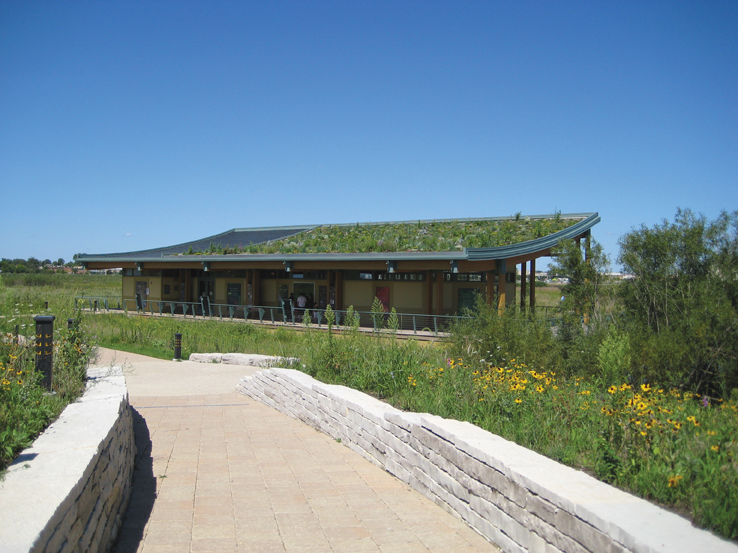Low impact development (LID) refers to a comprehensive land planning and engineering design approach to managing stormwater runoff that emphasizes conservation and the use of on-site natural features to protect water quality. According to the nonprofit Low Impact Development Center, Beltsville, Md., the goal of LID is to “maintain and enhance the pre-development hydrologic regime of urban and developing watersheds while allowing for development or infrastructure rehabilitation.”
After reading this article, you should be able to:
- Understand how low impact development (LID) benefits the health, safety, and welfare of building owners, occupants, and the community.
- Know what to consider to incorporate LID into sustainable design and construction strategies.
- Discuss the “treatment train” and how various “best management practice” options are used to enhance project sustainability.
- List the life cycle cost advantages of LID and evaluate their sustainability advantages in specific projects.
Related Stories
| Oct 27, 2011
iProspect selects VLK Architects for new office design
Company growth prompted iProspect to make the decision to move to a new space.
| Oct 27, 2011
ASSA Abloy, MAXXESS Systems announce U.S. Aperio integration
Aperio will integrate with MAXXESS's eAXxess and Efusion Event Management Software packages.
| Oct 26, 2011
Metl-Span selected for re-roof project
School remained in session during the renovation and it was important to minimize the disruption as much as possible.
| Oct 26, 2011
Shawmut Design and Construction awarded Tag Heuer build in Aventura, Fla.
New store features 1,200 sf fit out at Aventura Mall.
| Oct 25, 2011
HKS Science & Technology practice formed
Specializing in the planning and design of highly technical building types, HKS’s Science & Technology practice offers the broadest range of services available to the academic and biomedical research, biotechnology, pharmaceutical and medical device community, including laboratory programming, planning and design, strategic science planning and laboratory equipment planning.
| Oct 25, 2011
Universal teams up with Earthbound Corp. to provide streamlined commercial framing solutions
The primary market for the Intact Structural Frame is light commercial buildings that are typically designed with concrete masonry walls, steel joists and steel decks.
| Oct 25, 2011
Ritner Steel CEO elected to AISC Board
Freund will begin serving on the AISC board of directors, assisting with the organization's planning and leadership in the steel construction industry.
| Oct 25, 2011
Commitment to green building practices pays off
The study, conducted by the Pacific Northwest National Laboratory, built on a good indication of the potential for increased productivity and performance pilot research completed two years ago, with similarly impressive results.















